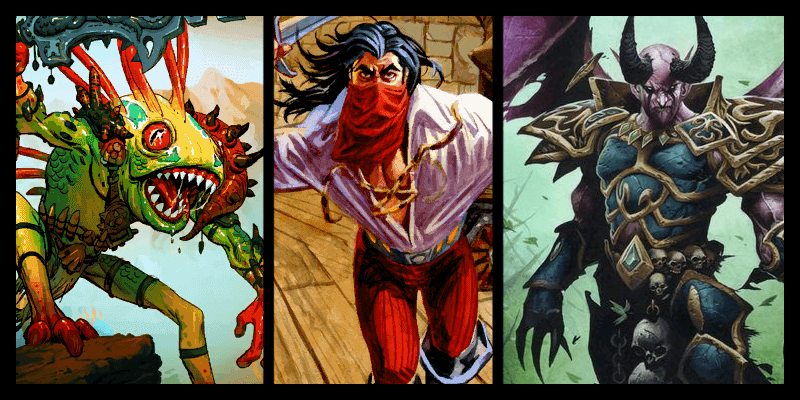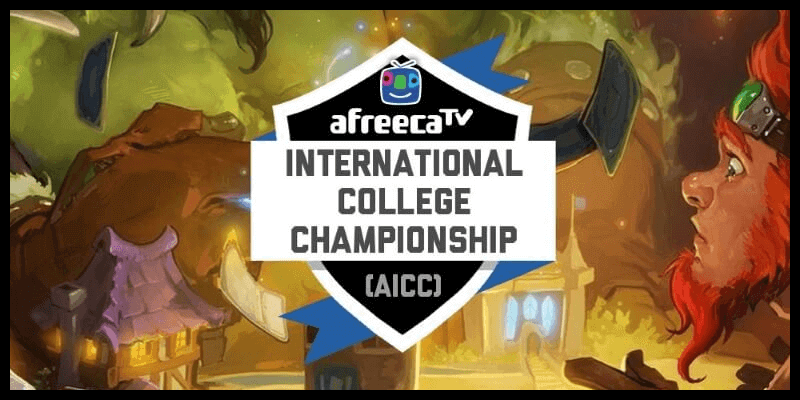Has your upward climb to Legend come to a standstill? Cherylchalla discusses the question that players often forget to ask themselves: do you truly have an understanding of the matchups you're going up against with the deck you're using?
What deck should I use to get Legend? “Use [insert flavour of the month deck here]; it’s OP.” “Choose your favourite deck and stick with it.” “Just play the fastest deck possible. You know, hit face with Rexxar!” These are the answers you’ll typically get.
Anyone who has found themselves stuck at the same rank during a Legend grind has probably asked that question before, hoping that the fault lies in an inappropriate deck choice for the meta. While it is true that being receptive to the decks you are playing against is a good start, being completely trained on the idea that you need to find the “perfect deck” to get to Legend is not the correct mindset. In fact, I believe that a good player could get there with any deck they wanted. Instead, you should be thinking to yourself, “With which deck do I have the deepest understanding of any given matchup? That’s the deck I can reach Legend with.”
In every match, one player will take the role of Control/playing defensively and the other player will take the opposite role of Aggressor/setting the pace. In some matchups, understanding whether you should be playing the defensive or offensive role is obvious, given the nature of the decks involved. Sometimes, it depends on the opening hand you’re dealt. Other times, you may swap roles with your opponent mid-game, due to the way the match unfolds. Recognizing when you should be playing aggressively or defensively and when that may change in the middle of the game is one of the important instincts a player who wants to reach Legend needs to develop.
Let’s walk through a few examples.
Take the Control Warrior versus Face Hunter matchup. This is an example where the role each player takes is obvious. The Face Hunter deck is incredibly fast, constantly setting the tempo, meaning the opponent is always being forced to respond. The player that sets the tempo is the player that is dictating the pace of the game. But the Control Warrior deck is built to respond. With weapons and armor, it is easy to exhaust the Face Hunter so that the Hunter runs out of steam. As long as the Control Warrior is able to play defensively and stabilize, the Face Hunter’s onslaught will eventually lose its impact.
On the other hand, the Oil Rogue versus Face or Hybrid Hunter matchup is always an interesting one. If the Oil Rogue finds themselves in situations where they are boxed in by Freezing Traps and aren’t finding their combo pieces in their hand, the Oil Rogue should be using their cards defensively. Ideally, an Oil Rogue wants to be able to control the board early with their cheap removal (like Backstab and SI:7 Agent) and is always looking for a chance to transition into being the aggressor. If you’re the Oil Rogue, you want to kill the Hunter before the Hunter can kill you with their plethora of options for damage. Always count the damage you’re holding and think a few turns ahead. Can you kill the Hunter soon? Then save your Eviscerates to deal Face Damage. Recognizing when to start thinking aggressively is usually the key to winning this matchup.
Mirror matchups are good examples of when the role that each player should take is more ambiguous and, often, changes throughout the match. When you’re facing up against a deck that is similar to your own, it’s important to be keeping track of your opponent’s resources. It’s much easier to start playing aggressively in a Control Warrior matchup when your opponent’s used up all their Executes and Shield Slams, while you might consider prioritizing clearing a fellow Oil Rogue’s board if they haven’t used any of their combo pieces yet.
Of course, these examples are all very general. So how does one improve their instinct on whether they should be playing aggressively or defensively? The more you play the game, the easier this instinct will come to you, as a lot of Hearthstone is learned with experience. That being said, the best way to start learning the matchups you are unfamiliar with is to start reflecting after every match. Did I assume the correct role that game? If there was a turning point, did I recognize it and change roles accordingly? Would I have won or lost if I had played aggressively or defensively instead?
Another factor is to start getting into the habit of thinking a few turns ahead. What’s going to happen if I let this board slip out of my control? How close am I to killing my opponent? How close is my opponent to killing me? If you’re using a combo based deck, chances are, your resources and damage are finite. Will I run out of damage? By forming a game plan based on the direction you think the game will go, you’ll naturally get a feel for which role you should be assuming.
Finally, start getting used to evaluating how you should be using up your resources. The role you’ve assumed will typically dictate whether you play your cards for tempo or for value. Take a Rogue’s Sap against Druid for example. Although Sapping a big Ancient of War can feel great, an Oil Rogue looking to push aggressively against combo Druid would be willing to Sap a Piloted Shredder to set the pace of the game, rather than trying to save it for turn 7. Never forget that card usage is a tug of war between tempo and value.
The following chart is a general summary of the matchups you see in Hearthstone. The leftmost column shows your deck's archetype while the uppermost row represents your opponent’s. A green box indicates that, initially, you’re looking to play that matchup more aggressively, while a red box indicates a more defensive, control role.
Keep in mind that these are the roles that you’re hoping to assume at the beginning of those matchups under ideal circumstances. But games don’t always unfold the way they’re supposed to. Your draws and the state of the board will dictate whether your role changes in the middle of a game. Even a Control Heavy deck like Handlock has the option to start aggressively hitting face against Midrange decks when looking to close a game.
I considered and grouped current meta decks into the following categorizations.
- Combo Based: Patron Warrior, Malylock
- Heavy Control: Control Warrior, Freeze Mage, Priest
- Aggro: Face Hunter, Aggro Paladin
- Midrange: Zoo, Midrange Hunter, Midrange Paladin, Shaman, Oil Rogue (usually considered a combo deck, but grouped here for the purposes of this chart)
Footnotes
- The key is to be mindful of each other's combo possibilities and turns.
- Be alert on who's used up what resources when, especially if it might come to fatigue.
- The role you assume likely depends on whether or not you can make value trades and your life total relative to your opponent's. "Note that a lot of the times, the aggressor is the person who plays first (not on coin)," says Joey, "unless the person going first has no initiative or a poor draw."
- A tug of war between when to push and when to make value trades.
- Combo decks are difficult to define in this context. Take Patron Warrior as an example of a combo deck, as it is looking to control the board until you draw into your combo pieces. With matchups against a Control Heavy deck like Handlock, however, the period you control exists within a window, since they can often heal and taunt until your combo can’t break through. “If you no longer have the resources to kill them,” explains modernleper, “you cease to be Controller or Aggressor. Having one of those roles in the game implies a possibility of winning. You don’t - you are just the loser.” Furthermore, let's consider the Patron vs. Freeze Mage matchup. "By playing Control with Patron," says justsaiyan, "you win 100% if you play defensively and they use Alex on you."
Ultimately, being able to identify which role to assume at any point of any given matchup is a skill that can be honed with time. While it is not the only factor that separates Legend players from non-Legend players, the ability to construct a gameplan just by knowing when to be the defender or the aggressor can outright win you games. Keep in mind that the examples in this article are static. The chart itself is static. The games you'll play are fluid and dynamic, with every match being unique to you and your opponent's hands and the condition of the board. Be receptive to the situation when choosing which role to assume and form a game plan accordingly.
Special thanks to modernleper, Joey, Curdy, ErA, and justsaiyan for their time and expertise, especially with their inputs on the contents of the chart.







